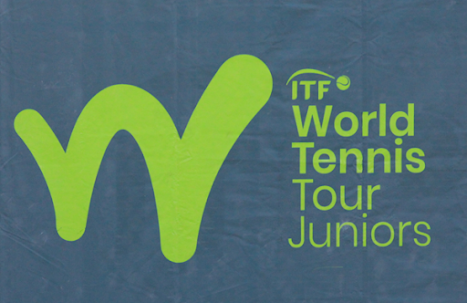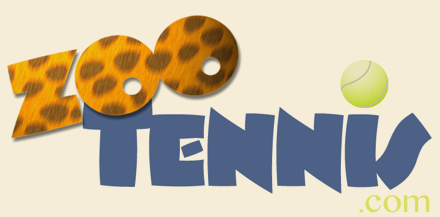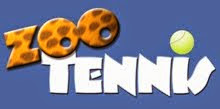ITF Junior Rule Changes for 2025, UTR Joins USTA's Connect Initiative
The ITF always posts the rule changes for the Junior Circuit in December, and it always takes me several weeks to find the time to study them. I posted a link to the 2025 rule change document in December as it related to the final ITF Junior rankings and the junior Accelerator Programs, but did not have an opportunity to dive in beyond that.
While the changes are helpfully underlined in the complete version of the ITF WTT Junior Rules, what the changes replace isn't always so clear, so it helps to have the previous year's rules available for comparison.
One of the big changes for 2025 was in entry fees, which increased dramatically, rising by 50% for the J500, J300 and J200 main draws: from $100 to $150. Given that these tournaments provide hospitality, it's not an outrageous amount (USTA Level 1 tournaments are more than that now and do not provide hospitality), but the justification, which I missed on the first read, is interesting.
Every effort is made to keep entry fees for all tournament levels at a reasonable rate, but an increase is
needed in 2025 to enable the ITF to continue to maintain existing Tour systems; to provide improved
player support services; and importantly to allow us to explore new technology which has potential to
benefit players going forward.
Not all players travel with a coach and so we are working with partners to see if it will be possible to
introduce live streaming across certain tournaments, as well as capturing and sharing match analysis
data, tools which have potential to be beneficial for players as they develop their game.
To assist us with maximising the impact of new technology, tournaments have been requested to
increase the number of matches featuring Chair Umpires and matches with live scoring and/or live
streaming in 2025. We will issue progress updates over the course of the year.
Because off court coaching has been introduced for this year at all ITF levels, but only when a chair umpire is present, the ITF appears to be addressing that issue in requesting more chair umpires and more live scoring and live streaming. That's a noble goal, but one I haven't seen implemented so far this year, including at this week's J500 in Cairo. The problem with the ITF's "requests" and "recommendations" is that they are not binding. It's been several years now that the ITF has recommended that tournaments with 32-player main draws and 32-player qualifying draws change to 48 and 24, respectively, but that has not been adopted, with all the J300s in Central and South America, and the J300 in Egypt last week, using the 32 draws. Many reduced draw sizes in the immediate aftermath of the pandemic, but they haven't returned in the normal years since.
There is now what is called a Junior Grand Slam Regional Reserved Exempt, which allows slams to formally designate a spot for a regional wild card playoff winner. Roland Garros has been doing this for several years with a South American qualifying tournament, using one of their wild cards; that is now a part of the ITF acceptance criteria.
Other changes:
- Electronic line calling is now possible within the new ITF junior guidelines
- players are now required to complete two additional ITF Academy courses to compete
- there are again more changes to the always complicated nationality/country representation rules
- clarification regarding lucky loser sign-ins the day after the qualifying has been completed
- permission to withdraw from one J30 or J60 and sign in as on-site alternate to another the same week
- scrapping of the 16 & Under Team feed up initiative
- new 16 & under regional reserved project for Tennis Europe and COSAT
- Safeguarding course required for Tournament Directors
There are many new requirements for Tournament Organizers at the higher level events; players should read these carefully and ask about them at the tournament desk if they do not see them being implemented. In my experience, some of the older requirements have not been provided, so I envision the possibility that the new ones will be adopted slowly, if at all. These include, depending on the level of tournament:
- ITF branding on show court
- Live streaming, live scoring encouraged
- Spectator seating at J300 and above, 250-person seating at J500s
- J500 indoor building a MUST for Player Lounge
- recommended for J300 tournaments
- required number of stringers
- Reasonable gym space and equipment a MUST at J300 and J500 tournaments
- Ball persons recommended from semis at J300 and J500
- Four balls per match, new balls for 3rd J300 a MUST, recommended ball changes at 11 and 13 for chaired matches
- J500 4 balls, change after 11 and 13 a MUST, recommended at 9 and 11 games
- Free sport drinks a MUST at J500 tournament desks, recommended at J300
- Transportation at least every 90 minutes a MUST if tournament hotel more than a 15-min walk
There are also changes to the ITF Junior Team Competition rules and regulations, but as these pertain to so few players, I will not go into those changes here.
This is not a comprehensive look at the 2025 ITF WTT Junior Rules and Regulations or all the changes for 2025, but rather my annual plea for players, parents and coaches to review the changes and read through the entire set of regulations at least once each year so you can address issues that arise at tournaments in an informed and confident manner.
The USTA announced today that UTR is one of four organizations joining its USTA Connect initiative. Although the USTA has not been using UTR at all, having opted to implement the ITF's World Tennis Number as an adjunct, UTR has been using USTA data in calculating its ratings; now this data sharing will go in both directions.
From Wednesday's USTA release:
Included in this group of USTA Connect partners is UTR Sports. As a result of this agreement, results from a wide range of tournaments and leagues on the UTR Sports platform will be provided to the USTA, while USTA tournament and league match results will remain part of the UTR Rating system. The shift to bidirectional data sharing will yield more comprehensive analytics and insights for American tennis. The ITF World Tennis Number, along with the NTRP Rating System, will continue to be the exclusive ratings for use in USTA play.
Any new connection between UTR and the USTA is welcome, given the USTA's mission of growing the game through as many avenues as possible. It's obvious that UTR, particularly with its expansion of its Pro Tennis Tour and its role as a trusted reference point for college coaches, is now a vital part of the tennis landscape in the United States and will add valuable input to the USTA.
More on USTA Connect, including a list of its current partners, can be found here.










0 comments:
Post a Comment